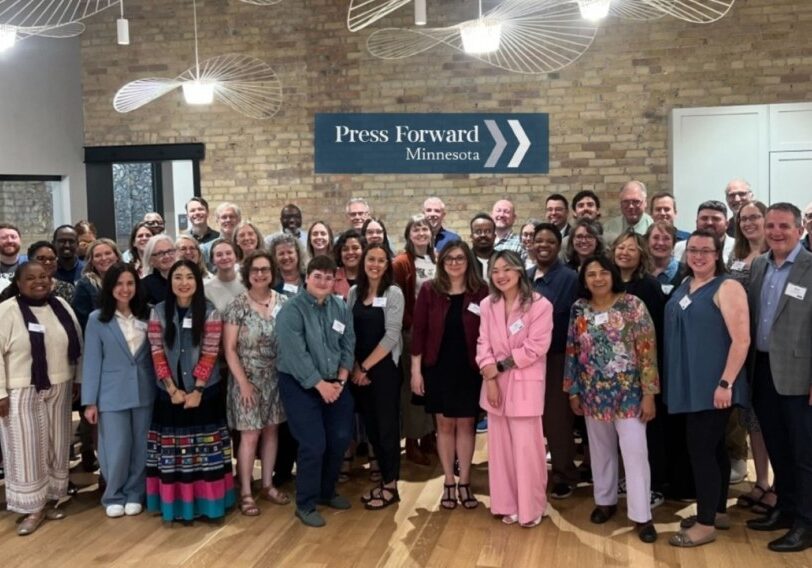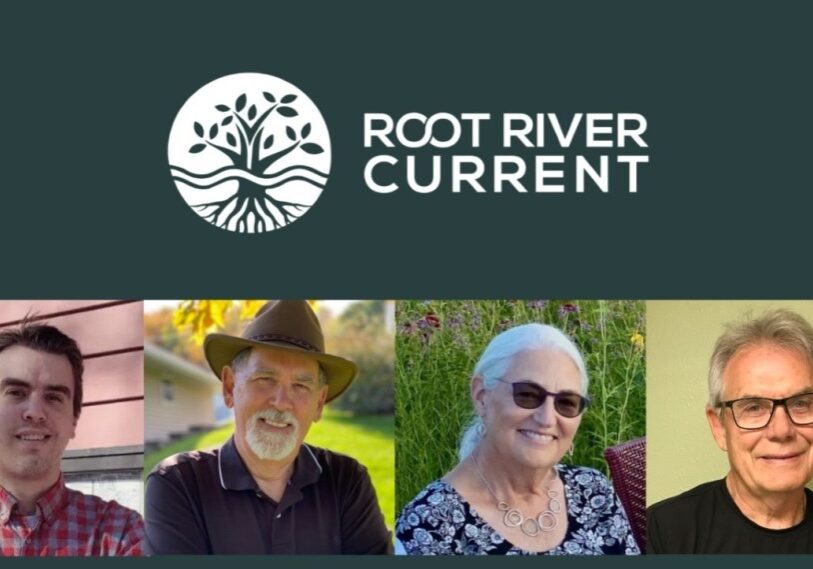Inside Root River Current | A Visit to the Grand Meadow Chert Quarry
Publishing team puts ‘boots on the ground’ with tour of site featured in recent stories

GRAND MEADOW TOWNSHIP, MOWER COUNTY – On a steamy June day under a bright blue sky, the Root River Current publishing team and a few board members embarked on a field trip with content contributor David Phillips.
Together we shared in a special tour of the Grand Meadow Chert Quarry/Wanhi Yukan Archaeological and Cultural Preserve, an extraordinary site located in the upper reaches of the Root River Valley, first introduced to our readers in this three-part series in the spring of 2025.

Archaeologist and project co-leader, Tom Trow, starts the tour at the first interpretive sign. (Photo by John Gaddo)
Since publishing our series, this cultural site has officially opened to the public and we were excited to be joined by others who helped make this project a reality: members of the Mower County Historical Society; local landowners and their family members; Assistant Majority Leader of the Minnesota Senate, Senator Mary Kunesh; an MPR News reporter; and the project’s team and co-leader, Tom Trow, whose enthusiasm for this project has not waned one bit.

Root River Current co-publisher John Torgrimson is interviewed by MPR reporter Melissa Olson. (Photo by Julie Fryer).
Walking the trails, Trow recounted the decades of planning, research and land access it took to even start the project.
Trow and his team shared their stories of the long journey from one curious landowner to this historic, living Minnesota site — one of the few in the state where visitors can touch and see an original Indigenous cultural site.

Tom Trow touches one of the original quarry stones — most of which is still buried beneath the ground — which was used to knap (or form) the quarried chert into tools. (Photo by Julie Fryer)
He shared the challenges of restoring this thickly wooded site to a walkable, learning space visitors can meander through. At times during their work, the thick buckthorn and brush made it impossible for volunteers to see each other from just a few feet away.
He shared historical context and interesting tidbits throughout the tour and even climbed down into one of the pits to give us a sense of the depth and scale of one of the worksites.

Tom Trow stands in one of the deep pits still visible at the site. (Photo by Julie Fryer)
Together, near the end of the tour, we sat down at the site’s stone “talking circle” to ask questions and share how this experience made us feel.
From “humbled” to “curious” to “inspired”, it was evident that all who visit here will be deeply moved by the thoughtful presentation of an important, and almost forgotten, piece of southeastern Minnesota history.

Tom Trow answers guests’ questions as we sat on stones in the “talking circle” and shared memories of this 45-year project. (Photo by Julie Fryer)
Our team was also reminded that we are not just reporters. We are part of the community we’re reporting on, and we are committed to experiencing the story right along with our readers.






